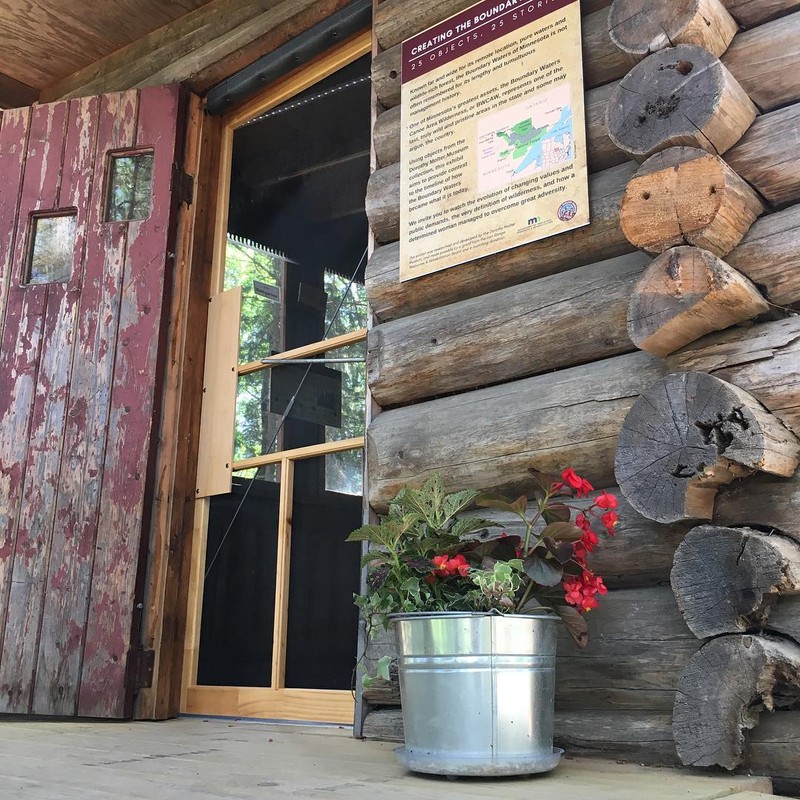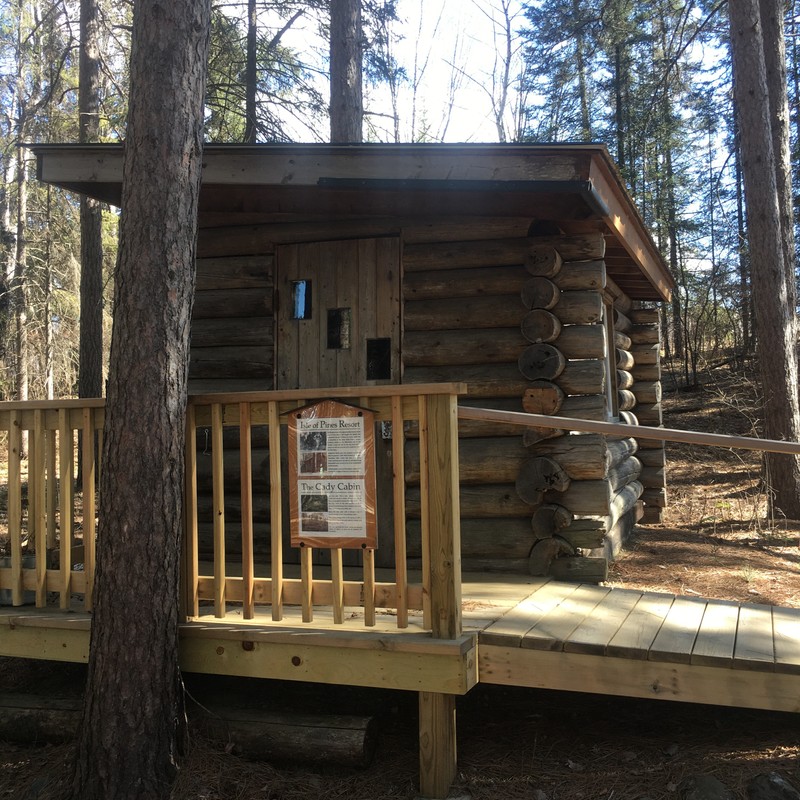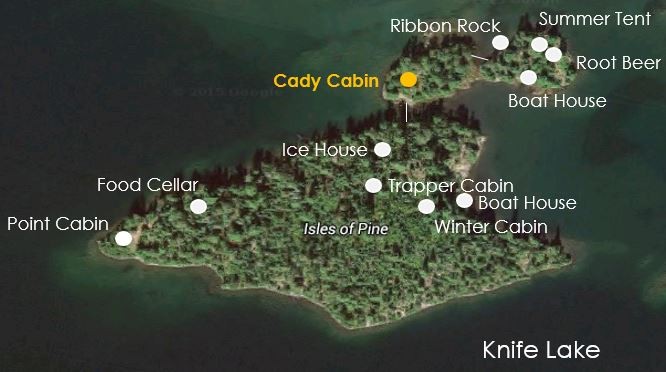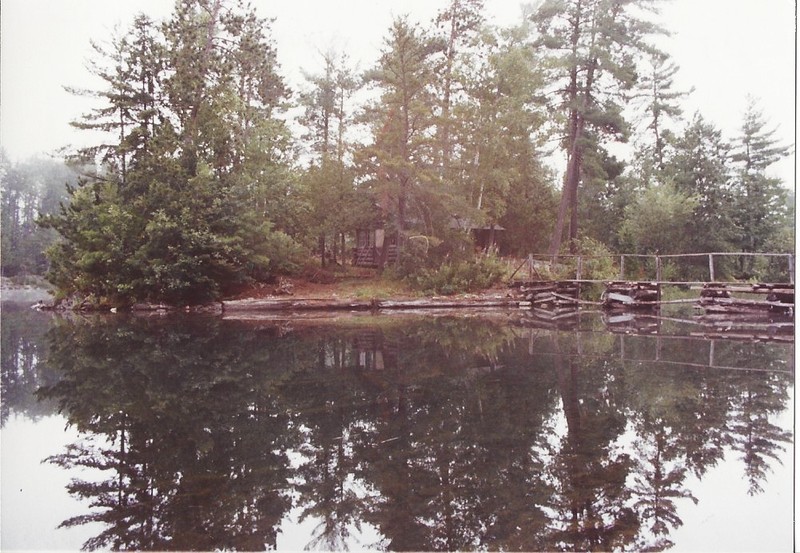Cady Cabin (Honeymoon Cabin) & Temporary Exhibit
Introduction
Text-to-speech Audio
Images
Cady Cabin Entrance

Cady Cabin

Cady Cabin location at Isle of Pines

Cady Cabin on Isle of Pines

Backstory and Context
Text-to-speech Audio
Also known as the Honeymoon Cabin because it was the only guest cabin with a full-sized bed, the Cady Cabin was another guest cabin at the Isle of Pines Resort. A tree fell on the cabin before it was relocated to the museum, but it was able to be salvaged in part and reconstructed at the Museum property, a short distance down Dorothy's Discovery Trail.
The story about this cabin isn't 100 percent clear but we do know that Bill Berglund (original property owner) did not build it. The Museum was been told that a resorter who visited the Isle of Pines Fishing Resort each summer financed the construction of it as a result of a reservation mix-up. Having "his own" cabin for a standing annual reservation ensured he would never show up without a bed to sleep in.
It currently houses a new exhibit about the history of the BWCAW and how it affected Dorothy. It’s called Creating the Boundary Waters: 25 Objects, 25 Stores and provides a wonderful explanation of how the BWCAW came to be the entity we know it as today.
For many, when they think of the Boundary Waters of Minnesota, this area is most often known for its remote location, pure waters and wildlife-rich forest. What the Boundary Waters is not often remembered for outside of northeastern Minnesota is its lengthy and tumultuous management history. Less still is remembered about how the creation of the Boundary Waters significantly affected Dorothy Molter.
Creating the Boundary Waters: 25 Objects, 25 Stories, is a commemorative exhibit celebrating the 25th anniversary of the Dorothy Molter Museum in 2018, which opened its doors to the public on May 6, 1993 (Dorothy’s birthday).
The story of Dorothy Molter cannot be told without telling the story of the Boundary Waters.
Dorothy’s life on Knife Lake began when the groundwork for a future Boundary waters had already started. The U.S. Forest Service had already been tasked with actively seeking the purchase of all private landholdings in the Superior Roadless Area when she inherited the Isle of Pines Resort.
In the decades following, Dorothy resisted selling her property and became the unwilling poster child for landowner rights in the Northwoods. In towns and cities across northeast Minnesota, citizens and various interest groups were polarizing as the passing of the Wilderness Act became imminent.
This controversial time is a key element of Dorothy’s story and now the Dorothy Molter Museum is finally able to highlight this regionally and culturally significant portion of Dorothy’s history through a dedicated exhibit.
To tell a historically accurate account while still relevant to Dorothy’s past, the Museum chose to incorporate “stories” from the perspective of Knife Lake, the Isle of Pines, Bill Berglund (original builder/owner of Isle of Pines) and Dorothy Molter. Each story is paired with an object from the Museum’s collection that represents the period of time represented on each timeline panel.
Visitors will see a few objects never on display before such as Bill Berglund’s 1929 pocket journal, Dorothy’s extensive matchbox collection in a vintage slip box, and a 1976 Ely snowmobile map.
As visitors walk through the illustrated timeline, the objects are described in a way that encourages deeper thought into the meaning and outcomes of the historic actions taken to ultimately establish the Boundary Waters we know today and perhaps elicit a few strong feelings – positive or negative.
Since its designation as a wilderness under the 1964 Wilderness Act, each management change to the Boundary Waters has resulted in a fresh controversy. Yet, even with the challenges of opposing viewpoints and pointed arguments, the communities surrounding the Boundary Waters value this amazing natural resource and strive to protect it for the foreseeable future through a general appreciation for its existence despite its tumultuous history.
Like any controversial issue, understanding the history is paramount in developing an informed opinion for future decision making. Visitors are challenged to consider if they are willing to take on this responsibility and be informed participants in the ongoing management of the Boundary Waters Canoe Area Wilderness into the foreseeable future.
The exhibit Creating the Boundary Waters: 25 Objects, 25 Stories was funded by a grant from the MN Dept of IRRR and a generous anonymous donor.
Sources
Dorothy Molter Museum Collection Archives & Exhibit Panels
File 2000.11.08.03 of the Dorothy Molter Museum, Courtesy of Superior National Forest Collection, Iron Range Discovery Center
Guy-Levar, Sarah and Terri Schocke. Dorothy Molter: The Root Beer lady. Cambridge, MN: Adventure Publications. 2011.
Cary, Bob. The Root Beer Lady, The Story of Dorothy Molter. Edition 1. Minneapolis, MN. Univ Of Minnesota Press, 2002.
USFS BWCAW History & Culture. https://www.fs.usda.gov/detail/superior/learning/history-culture/?cid=fsm91_049843.
Dorothy Molter Museum
Dorothy Molter Museum
Dorothy Molter Museum
Dorothy Molter Museum
